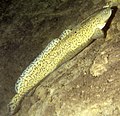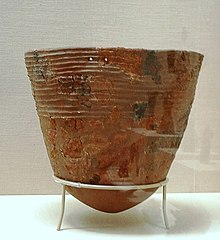Anti-abortion feminism or pro-life feminism is the opposition to abortion by some feminists. Anti-abortion feminists may believe that the principles behind women's rights also call them to oppose abortion on right to life grounds and that abortion hurts women more than it benefits them.
The modern anti-abortion feminist movement cites precedent in the 19th century; the movement itself began began to take shape in the early to mid-1970s with the founding of Feminists for Life (FFL) in the United States and Women for Life in Great Britain amid legal changes in those nations which widely permitted abortion. FFL and the Susan B. Anthony List (SBA List) are the most prominent anti-abortion feminist organizations in the United States. Other anti-abortion feminist organizations include New Wave Feminists and Feminists for Nonviolent Choices.
The modern anti-abortion feminist movement cites precedent in the 19th century; the movement itself began began to take shape in the early to mid-1970s with the founding of Feminists for Life (FFL) in the United States and Women for Life in Great Britain amid legal changes in those nations which widely permitted abortion. FFL and the Susan B. Anthony List (SBA List) are the most prominent anti-abortion feminist organizations in the United States. Other anti-abortion feminist organizations include New Wave Feminists and Feminists for Nonviolent Choices.
Views and goals
Anti-abortion
feminists consider the legal option of abortion to "support
anti-motherhood social attitudes and policies and limit respect for
women's citizenship".
Anti-abortion feminists believe that abortion is an action dictated by
society and legal abortion "perpetuates an uncaring, male-dominated
society." Laury Oaks, Associate Professor of Feminist Studies at the University of California, Santa Barbara,
writes that when abortion is legal, anti-abortion feminists believe,
"women come to see pregnancy and parenting as obstacles to full
participation in education and the workplace," and describes anti-abortion feminist activism in Ireland as more "pro-mother" than "pro-woman".
Oaks has written that while Irish abortion opponents valorize
child-bearing and are critical of the notion that women have "a right to
an identity beyond motherhood", some, such as Breda O'Brien,
founder of Feminists for Life Ireland, also offer feminist-inspired
arguments that women's contributions to society are not limited to such
functions.
Anti-abortion feminist organizations generally do not distinguish
between views on abortion as a legal issue, abortion as a moral issue,
and abortion as a medical procedure.
Such distinctions are made by many women, for example, women who would
not abort their own pregnancies but would prefer that abortion remain
legal.
Anti-abortion feminist organizations seek to personalize abortion
by using women who "survived" abortions to attempt to convince others
of their argument.
Prominent American anti-abortion feminist organizations seek to
end abortion in the U.S. The SBA List states this as their "ultimate
goal",
and FFL President Serrin Foster said that FFL "opposes abortion in all
cases because violence is a violation of basic feminist principles".
Relationship to other movements
Anti-abortion feminists form a part of the anti-abortion movement rather than the mainstream feminist movement. During the second-wave era
of the late 1960s and 1970s the tenets of the emerging group of
anti-abortion feminists were rejected by mainstream feminists who held
that for full participation in society, a woman's "moral and legal right
to control her fertility" needed to be a fundamental principle. From their minority position, anti-abortion feminists said that mainstream feminists did not speak for all women.
Having failed to gain a respected position within mainstream feminism, anti-abortion feminists aligned themselves with other anti-abortion and right to life
groups. This placement, according to Oaks, has eroded a feminist sense
of identity separate from other anti-abortion groups, despite pro-woman
arguments that are distinct from the fetal rights arguments put forward
by other anti-abortion advocates.
Arguments
The abortion debate has primarily been centered around the question of whether or not the fetus is a person.
Anti-abortion feminist organizations do distinguish themselves as
"pro-woman" organizations as opposed to "fetal rights" organizations.
This sets them apart from other anti-abortion groups.
The "pro-woman" argument frames abortion as harmful to women.
Anti-abortion feminists argue that women do not truly want to have
abortions, but rather are forced into abortions by third parties, partners or medical practitioners. These unwanted abortions, they say, cause physical and emotional damage to women.
However, research from the Guttmacher Institute shows that the majority
of women who have abortions seek the procedure for personal, financial,
vocational, and/or family planning purposes rather than under coercion
from third-parties.
By positing the existence of a "post-abortion syndrome"
mental condition, which is not medically recognized, anti-abortion
feminists reframe opposition to abortion in terms of protecting women's
public health. The "pro-woman" argument has been used to sway men and women against-abortion.
19th-century feminists
Feminist anti-abortion groups say they are continuing the tradition of 19th-century women's rights activists such as Elizabeth Cady Stanton, Matilda Joslyn Gage, Victoria Woodhull, Elizabeth Blackwell, and Alice Paul who considered abortion to be an evil forced upon women by men. The newspaper, The Revolution, published by Susan B. Anthony
and Stanton, carried letters, essays and editorials debating many
issues of the day, including articles decrying "child murder" and
"infanticide." According to historians A. Kennedy and K. D. Mary, Alice Paul felt that abortion was the "ultimate exploitation of women" and worried about female babies being aborted. Kennedy and Mary also say that Elizabeth Blackwell, the first female doctor in the United States, became a doctor because of her passionate hatred for abortion. By way of criticism, however, sociologists Nicole Beisel and Tamara Kay have written that white Anglo-Saxon Protestants
(WASPs) in the US were worried that continued abortions by their kind
would endanger their position at the top of society's hierarchy,
especially fearing the influx of Irish Catholics, but also concerned about African Americans, and describe Anthony and Stanton as part of this reactionary racial stance.
In arguing for "voluntary motherhood"
(abstinence until children are wanted), Stanton said that the problem
of abortion demonstrates the victimization of women by men who pass laws
without women's consent. Woodhull and her sister argued that abortion clinics would go out of business if voluntary motherhood was widely practiced.
A dispute about Anthony's abortion views
arose in 1989: anti-abortion feminists in the U.S. began using
Anthony's words and image to promote their anti-abortion cause. Scholars
of 19th-century American feminism, as well as pro-choice activists,
countered what they considered a co-opting of Anthony's legacy as
America's most dedicated suffragist, saying that the anti-abortion
activists are falsely attributing opinions to Anthony, and that it is
misleading to apply 19th century arguments to the modern abortion
debate.



























